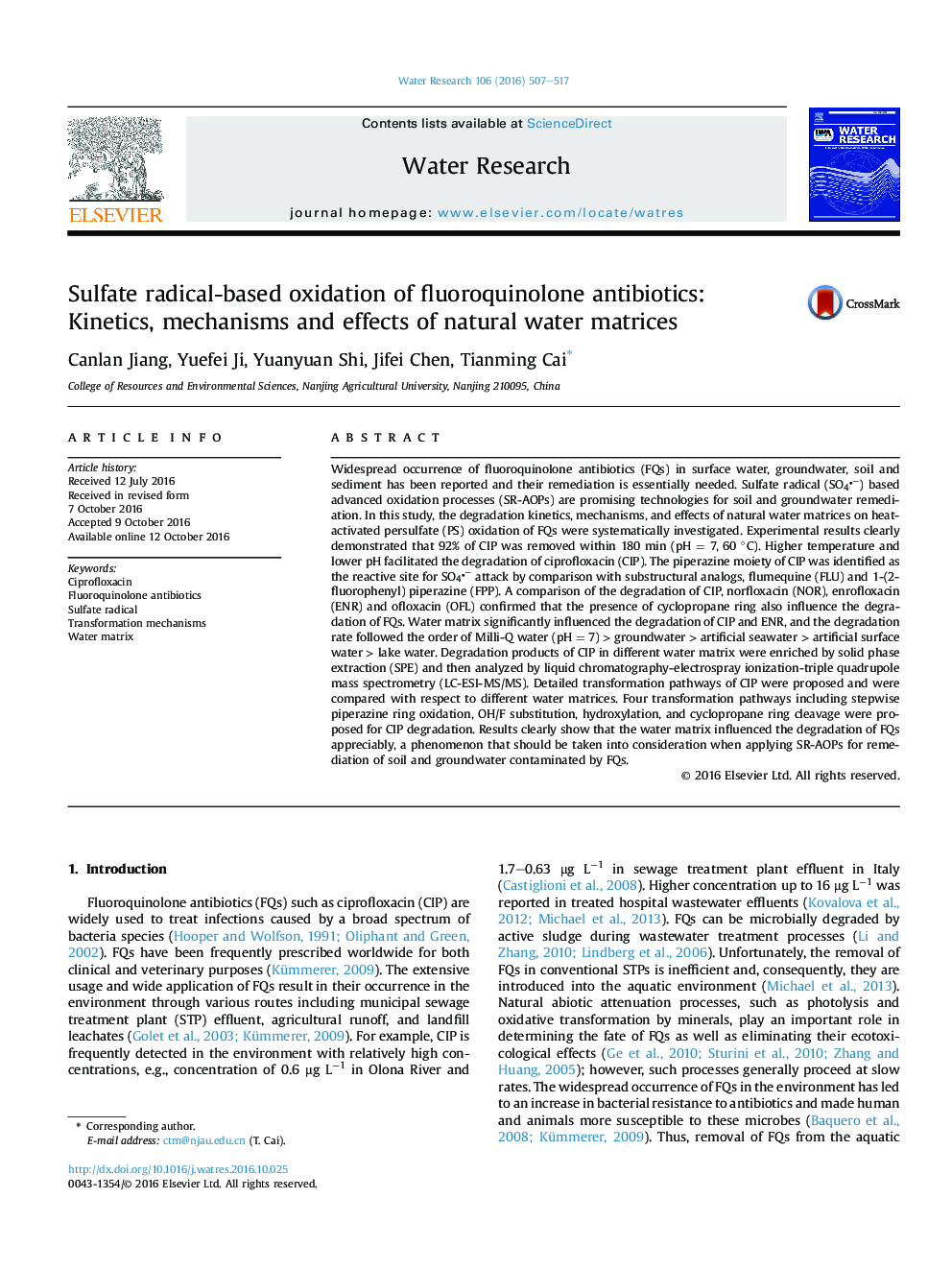| Article ID | Journal | Published Year | Pages | File Type |
|---|---|---|---|---|
| 6364266 | Water Research | 2016 | 11 Pages |
â¢Heat-activated persulfate induced oxidation of fluoroquinolone antibiotics.â¢Piperazine moiety of CIP was identified as the predominant reactive site for SO4â attack.â¢Lower degradation efficiencies of CIP and ENR were observed in all natural water matrices.â¢CIP degradation products were markedly affected by natural water constituents.
Widespread occurrence of fluoroquinolone antibiotics (FQs) in surface water, groundwater, soil and sediment has been reported and their remediation is essentially needed. Sulfate radical (SO4â) based advanced oxidation processes (SR-AOPs) are promising technologies for soil and groundwater remediation. In this study, the degradation kinetics, mechanisms, and effects of natural water matrices on heat-activated persulfate (PS) oxidation of FQs were systematically investigated. Experimental results clearly demonstrated that 92% of CIP was removed within 180 min (pH = 7, 60 °C). Higher temperature and lower pH facilitated the degradation of ciprofloxacin (CIP). The piperazine moiety of CIP was identified as the reactive site for SO4â attack by comparison with substructural analogs, flumequine (FLU) and 1-(2-fluorophenyl) piperazine (FPP). A comparison of the degradation of CIP, norfloxacin (NOR), enrofloxacin (ENR) and ofloxacin (OFL) confirmed that the presence of cyclopropane ring also influence the degradation of FQs. Water matrix significantly influenced the degradation of CIP and ENR, and the degradation rate followed the order of Milli-Q water (pH = 7) > groundwater > artificial seawater > artificial surface water > lake water. Degradation products of CIP in different water matrix were enriched by solid phase extraction (SPE) and then analyzed by liquid chromatography-electrospray ionization-triple quadrupole mass spectrometry (LC-ESI-MS/MS). Detailed transformation pathways of CIP were proposed and were compared with respect to different water matrices. Four transformation pathways including stepwise piperazine ring oxidation, OH/F substitution, hydroxylation, and cyclopropane ring cleavage were proposed for CIP degradation. Results clearly show that the water matrix influenced the degradation of FQs appreciably, a phenomenon that should be taken into consideration when applying SR-AOPs for remediation of soil and groundwater contaminated by FQs.
Graphical abstractDownload high-res image (260KB)Download full-size image
